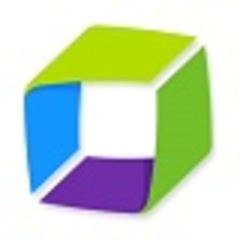- Application performance monitoring root cause analysis
- User experience analysis
- Proactive monitoring (application, third-party API, and availability and host)

It helps to identify the problem in a minute and user experience metrics provide valuable data to the business team to understand how the application performs at the end user level. Overall, it is an amazing tool for application root cause analysis and business function analytics.
Its needs to focus more on open source areas, like Apache umbrella products and availability motioning areas.
SaaS infrastructure monitoring and alerting. We use it to monitor over a 1000 servers in AWS.
It is our main SaaS monitoring and alerting solution, and it allows us to identify many problems that we would miss if we did not have a comprehensive monitoring solution.
This stuff all works out-of-the-box, and is essential for a DevOps team to be aware of to identify production issues.
Application performance diagnostics of our enterprise critical applications. Proactive monitoring of response times and trends. Performance and load testing of new versions.
The ability to go from a high level performance view to a specific transaction. Dynatrace covers the important tiers and allows us to quickly find trends and root causes in all our critical application lifecycle steps (Ops, Dev, and Performance).
It is not clear which path the product will follow with Dynatrace in the cloud (or on-premise) and Appmon. As an existing customer who has invested heavily in training and using the Appmon version, it is not clear what are our long-term strategy should be to upgrade (Appmon vs Dynatrace).
User performance monitoring; to be able to proactively understand the user experience on our site.
User Sessions. I am able to tell what the user experience is like on the web pages.
Also, I'm able to drill down to identify problem issues.
I would like the ability to export a user session into csv format. (I am aware that I can export a user session via a webhook).
We started using Dynatrace software as a better alerting and application monitoring mechanism. We are happy with the server monitoring, but we feel like the application monitoring should be improved.
I would definitely say it improved the functionality. We are able to prevent the major downtimes by proactive monitoring alerts.
PurePath comparisons are the most useful feature.
It can be improved in narrowing the exact exception/ERROR in application monitoring. It should focus more on app monitoring and capture for some of the known alerts and be able to identify which system is having the issue.
We use it for proactive monitoring, user experience monitoring, analyzing load versus response time.
Very good for improving application performance. Gives us a view of the application, infrastructure, and users' experience with the application.
It identifies all the functional errors and slow APIs.
End-to-end monitoring could use more default dashboards.
Application Performance Monitoring. Our main use is to monitor our applications for any issues that might arise and use the data to assure that our performance trending is headed in the right direction.
We find the majority of the features very usable and valuable. Our focus would be on the ability to drill into our custom code and validate that it is performing as expected. The ability to monitor performance and create custom dashboards.
With new versions coming out, staying up to speed and training needs. Dynatrace provides this via many outlets, so finding resources to keep yourself relevant within the tool is not that challenging.
We use the product on our applications for monitoring and troubleshooting errors through customized dashboards.
The major impact of improvement is from AppMon in our development area. Now we are enable to find applications problems more quickly.
The best feature of the product for me is the real troubleshooting capability through the PurePath analysis.
I also like the Transaction Flow dashlet where I can see the real path of our web request through the application's layers.
I don't much like the Java Management Extension. I would rather do administration tasks in a web GUI.

